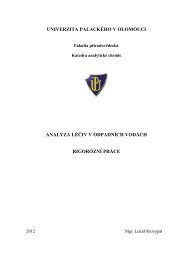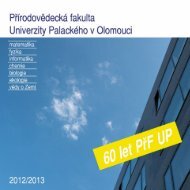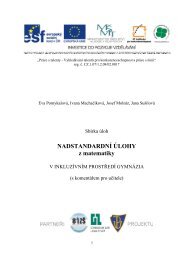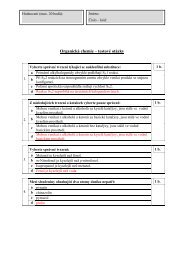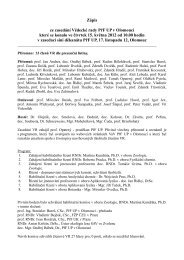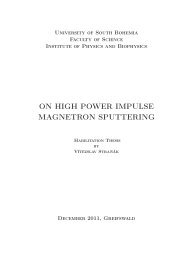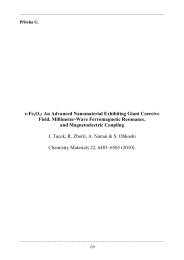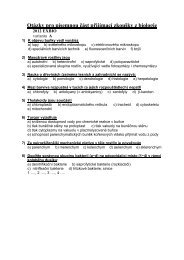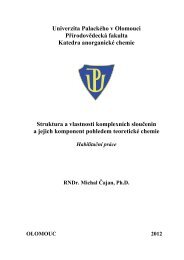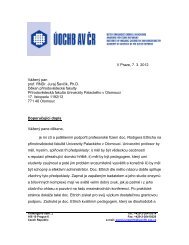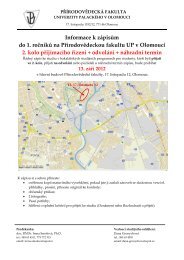A comparative structural analysis of direct and indirect shoot ...
A comparative structural analysis of direct and indirect shoot ...
A comparative structural analysis of direct and indirect shoot ...
You also want an ePaper? Increase the reach of your titles
YUMPU automatically turns print PDFs into web optimized ePapers that Google loves.
4210 Illéš et al.<br />
Fig. 9. Detection <strong>of</strong> NO production by DAF-2DA labelling in control root tip (A), root tips treated with 90 lM aluminium for 60 min (B), <strong>and</strong> 10 lM<br />
cPTIO, the NO-scavenger, for 60 min (C). Fluorescence <strong>of</strong> DAF-2DA is green, FM4-64 is red. Fluorescence intensity (D) <strong>and</strong> distribution (insert) <strong>of</strong><br />
DAF-2DA labelling along root developmental zones. Note the disappearance <strong>of</strong> the NO production peak in DTZ after aluminium treatment. Average<br />
intensities <strong>of</strong> 20 roots per treatment.<br />
<strong>of</strong> the root apex including the PTZ <strong>and</strong> the elongation zone<br />
(see FM4-64 labelling <strong>of</strong> the tonoplast), although internalization<br />
<strong>of</strong> aluminium was spatially restricted to the pectinrecycling<br />
zone (Baluška et al., 2002), <strong>and</strong> did not occur<br />
in the PTZ <strong>and</strong> the elongation zone. Inside the cells,<br />
endosomal-sorting processes might be implicated in releasing<br />
the aluminium from the pectin complexes; pectins would<br />
be recycled back to the cell wall while aluminium would<br />
continue in the endocytic pathway towards the vacuole. Pectin<br />
molecules reaching the cell wall may represent a new<br />
pool for binding <strong>of</strong> free <strong>and</strong> loosely bound apoplastic aluminium<br />
<strong>and</strong> thus support the gradual removal <strong>of</strong> morinstained<br />
apoplastic aluminium during recovery. Supporting<br />
data for such endocytic internalization <strong>of</strong> aluminium come<br />
from the presence <strong>of</strong> aluminium in myelin figures (Vázquez,<br />
2002), which closely resemble the multilamellar endosomes<br />
occurring in the pectin internalization pathway (Baluška<br />
et al., 2005a). Difficulties with the visualization <strong>of</strong> these intermediary<br />
structures under experimental conditions could<br />
be caused by weakening <strong>of</strong> the morin fluorescent signal<br />
intensity. A decrease <strong>of</strong> the fluorescent signal in the morin<br />
detection method after aluminium binding to pectins<br />
in vitro was shown by Eticha et al. (2005). However, this<br />
finding obtained by both the use <strong>of</strong> h<strong>and</strong> sections <strong>and</strong>




